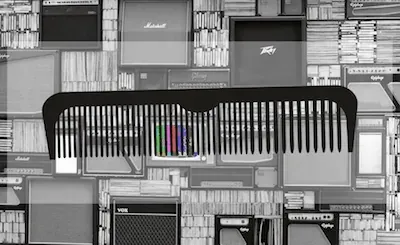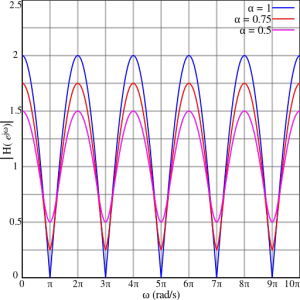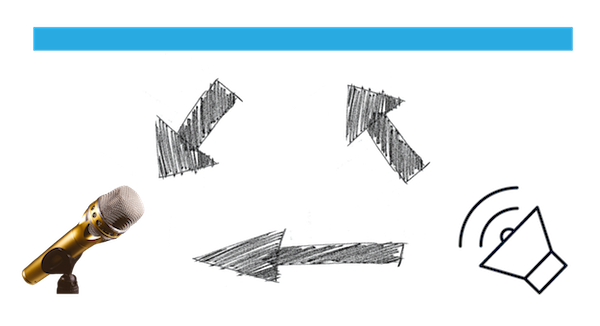What is Comb Filtering? Room Acoustics

A comb filtering effect happens in every room in some way or another. Sometimes it can be very obvious, where other times it's very subtle.
What is Comb Filtering? A comb filtering effect occurs when two audio signals that are playing the same signal arrives at the listener's ears at different times due to a delay. This causes a distortion and depending on the delay will depend on how audible it is.
A good example of a comb filtering effect is at a stadium concert. During the concert, there are a lot of audio signals reflecting off the sides of the stadium, and due to this, the audio signals may not arrive at each ear at the same time, which may result in a comb filtering effect.
Comb filtering can be confusing to understand, especially if you have never heard the term before. In this article, we will be explaining exactly what a comb filter is, why does it occur and how you can stop it.
What Is Comb Filtering?
Comb filtering is when two audio devices that are playing the same signal arrives at the listener's ears or is picked up by the recording device at different times.
Comb filter can cause these negative effects on the audio quality:
- Alter Pitch Perception
- Altered Room Impression
- Wrong Localisation
- Irreversible Audio Distortion
This causes many problems. Depending on the delay of the signal will determine how audible and distorted the sound is.
The reason it is called comb filtering is because the frequency response from comb filtering looks like a series of combs.
Here is an image of a chart that shows the frequency response from comb filtering. As you can see, it looks like a series of combs.

To understand comb filtering further, you can try and add your own comb filter effect to a soundtrack by having two exact copies and delaying one by a couple of milliseconds. Most digital audio workstations will have a delay effect/plugin that you can use.
When recording an instrument with two or microphones, and whenever the microphones are different distances apart, a comb filtering effect will always be present.
Comb Filtering Examples:
Here are some examples of when comb filtering may occur:
Example 1#: If you're recording an instrument with two different microphones and they are both different distances apart, comb filtering may occur due to the delayed time it takes the furthest away microphone to pick up and record the sound. To prevent this you can either move the microphones so that they are nearer the same distance, or you can use a delay effect that will add a delay to the nearer microphone, this will make sure the signal is being reached at the same time.
Using a high quality studio microphone can help bring out the clarity in your music which will result in a higher production quality.
Example 2#: If your home theatre speakers or home music studio monitors are at a different distance apart and are playing the same signal. Comb filtering will occur. Depending on the distances apart the speakers/monitors are, will determine the level of distortion that will happen. To prevent this, make sure your speakers or monitors are at the relatively same distances from the listener's ears.
Studio monitors are what music producers use to hear an accurate representation of the sound signal.
Example 3#: In a home music studio or a home cinema, the listener will hear a mixture of direct and reflected sounds. The reflected sounds will take longer to reach the listener's ears and therefore the listener will hear an effect called comb filtering. This interference may be constructive or destructive depending on how the room is laid out and if it allows the reflected sounds to average out the overall response. To prevent this, you should make sure your speakers are high up and the sound waves aren't being blocked by any surfaces.
How To Reconstruct a Comb Filtering Effect?
You can reconstruct a comb filtering effect at home by using two microphones and a sound source.
You can use white noise to reconstruct a comb filtering effect when using two microphones. Although any sounds can be used.
Record the sound source with both microphones at the same time and keep adjusting one of the distance of the microphone from the sound source.
This will reconstruct a comb filtering effect. Just like how this video is doing it:
You can also reconstruct a comb filter effect in your digital audio workstation by having two copies of the exact signal and then by adding a delay to one.

Another way to constructive is by setting up the environment in the photo above.
The sound bouncing off the wall will take longer to reach the microphone compared to the direct path, this will cause a slight comb filtering effect due to the time it takes for both of the sound waves to reach the microphone.
It also sounds this at 4:45 of the video above.
How To Prevent Comb Filtering?
There are many ways to prevent comb filtering. It will vary depending on the situation.
The main key is to make sure the sound arrives at the listener's ears or the recording device at the same time.
You need to make sure nothing is blocking the signal and interfering and causing a delay.
How to Reduce Comb Filtering?
Can't stop comb filtering? In certain circumstances, it can be very hard to completely stop a comb filtering effect, but there are ways you can reduce it so that it is audible and not noticeable.
Acoustically caused comb filters can sometimes be very hard to prevent, and it happens in every music studio due to the sound wave reflections from the monitors/speakers.
There are many ways you can overcome this problem and minimize the effects of comb filtering.
Acoustically
#1 - You can reduce the comb filtering effect by using the acoustical treatment such as absorbers and resonators. This will reduce the sound reflection, and therefore cancel out the duplicated signal and stop the comb filtering effect.
#2 - Position your microphone correctly. You should try different positions until you find out that sounds good. Make sure to avoid placing your microphone near walls or any surface that the audio could reflect off.
Non-Acoustically
1# - Reduce the surfaces the sound can bounce off or use absorbers and resonators to reduce the sound reflection, and like we said above, cancel out the duplicated signal and therefore this will stop the comb filtering effect.
2# - Once recorded you can add a delay to the soundtrack to fix the comb filtering.
What Is Phase?
Phase refers to a point and position in time on a cycle of a waveform. It is measured as an angle in a degree and a complete cycle is 360 degrees.
What Does Out Of Phase Mean?
Out Of Phase is when the amplitude is between 0 and 360 degrees, for example, if two signals had the exact same frequency, but one was between 0 and 360 degrees then the signals would be out of phase.
If these two signals were mixed together, they would cancel each other out and this would be called a Phase Cancellation.
Many people describe comb filtering as a "phase offset", this is actually incorrect, here's why:
The reason why calling it a "phase offset" is incorrect. The phase is bound to a specific frequency, therefore talking about a phase offset between two microphones is incorrect.
To be more precise it is best to call it a time difference or a delay.
You also need to consider the volume different too, as that is very important.
Multiple sound sources are audible of up to a volume difference of 18DB. Different sound sources also have different perception levels.
Conclusion / Summary
Comb filters are created when a copy of a sound signal with a slight time delay are mixed together.
This can occur in an acoustical environment. It can also occur in a non-acoustical environment by electrical or digital summing of audio signals. E.g speakers or instrument.
When it occurs in an acoustical environment it is most likely due to a surface reflecting of sound waves.
Both of these acoustical and non-acoustical comb filters can result in a frequency depended on cancellation of the original sound.
Related Questions:
Are there any specific locations where comb filtering could happen? Comb filtering is more likely to happen in environments such as home theatres, cinemas, concerts especially in stadiums since they are so big and recording studios.
Can music production software fix comb filtering? There are out of phase software/plugins that can help (a delay plugin might be able to resolve the problem) but once the raw signal has been recorded it will be hard to fix. You might have to re-record it without the time delays.
How do I fix comb filtering? If you're recording with two microphones, try placing them further a part and away from any walls that could interfere with the recordings.


